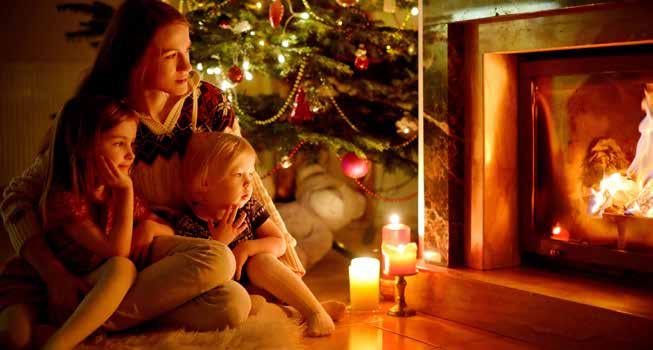
2 minute read
Is Your Furnace Running?
by Foley’s Heating & AC, Inc. Is Your Furnace
Running?
Catch Clues It Might Not Be Much Longer
Furnaces were fired up earlier than usual this year as Fall went the way most of us wish we could... off to next year. Now that we are officially in the midst of winter (first day officially Dec. 21) you do not want to suddenly discover your furnace is going on the fritz. Not only is a lack of heat uncomfortable and possibly dangerous, a failing furnace can become more expensive to operate or even become a source of carbon monoxide poisoning in your home.
According to the Department of Energy and the Environmental Protection Agency, the following are the eight critical assessments to consider when determining if your furnace is failing. a redneck...not necessarily, but your furnace is definitely older than the recommended shelf life of a furnace which is 16 to 20 years. Start shopping now. If you wait until the furnace actually dies you will not have the choices you have when actually shopping around. Another thing to consider is availability. The pandemic has presented supply challenges, as well as personnel challenges for a multitude of suppliers and contractors. ing typically require more repair in the last couple of years of functioning. Also, as a furnace ages, replacement parts become harder to come by. furnace would show signs of inefficiency and consequently may need to run longer to generate sufficient heat. Bills go up and over time that increased cash outlay could cover the cost of a
1. If your furnace has a pilot light, you might be
2. Repairs in the last 2 years: Furnaces that are fail-
3. Bills going up: It stands to reason that an aging
new furnace. 4. Signs of carbon monoxide: If the burner flame is yellow versus blue or flickers there may be carbon monoxide emitting from the furnace. Other signs of carbon monoxide build up include excess moisture on windows, walls and other surfaces; streaking soot around furnace; lack of upward draft in chimney; moisture leaking from base of chimney, vent or flue pipe.
5. Feeling unwell or ill: Older furnaces run the risk of developing cracks in the interior heat exchanger allowing carbon monoxide to leak into the house. Signs of carbon monoxide poisoning include flu-like symptoms such as frequent headaches and nausea, a burning feeling in the nose or eyes, and disorientation. If these symptoms occur, open windows and contact a service professional immediately. l
YOU DON’T NEED AN ILLNESS TO NEED A DOCTOR.

Regular wellness visits with a primary care physician or provider at Sanford Health can lead to better overall health. Better health care starts with a provider who’s a familiar face. Someone who actually knows you and understands your concerns and your goals.
We’re here before you need us. We’re here when you need us. We’re here after you need us.









